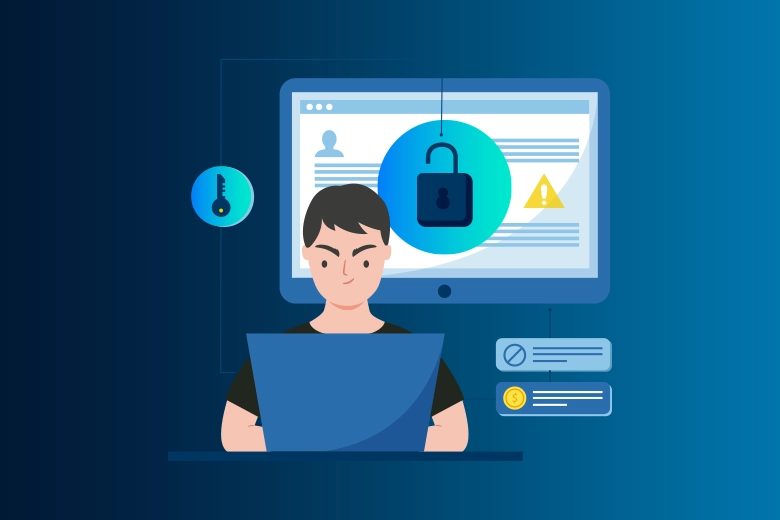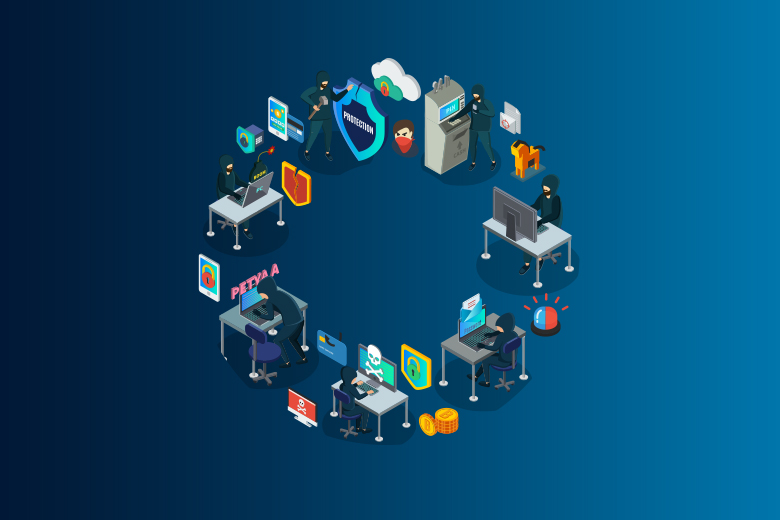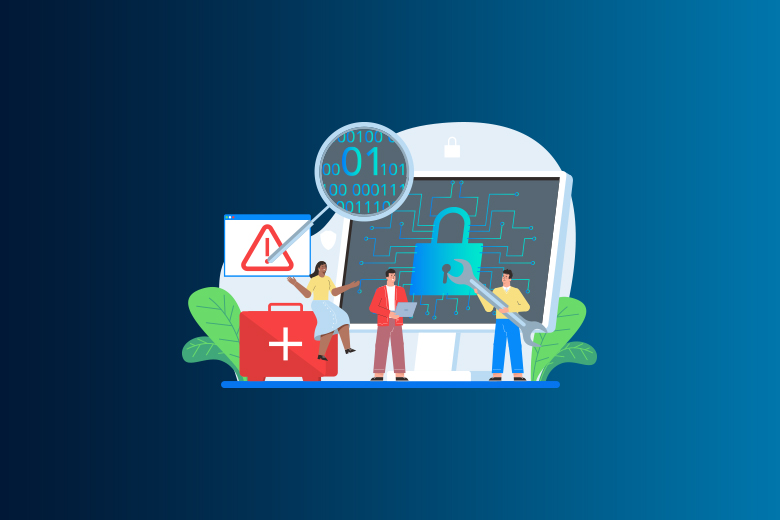16 February 2024
SafeAeon Inc.Strong protection is no longer a nice-to-have, it's a must in this digital age. The National Institute of Standards and Technology (NIST) Cybersecurity Framework has become the gold standard for businesses that deal with private data or government contracts. But getting around NIST 800-53's 20 control families and hundreds of individual controls can feel like going through a complicated maze.
Why should you put NIST 800 53 compliance checklist first? There's no doubt about the numbers:
- 43% of data breaches are caused by attacks from bad people, which shows how important strong security steps are. ( IBM Safety)
- Organizations that follow NIST report 21% fewer security breaches, which shows that the framework works. (From the Ponemon Institute)
- For government contracts, meeting the requirements of NIST 800-53 is often necessary. This can lead to profitable business possibilities.
At this point, a detailed plan will help you stay on track. It gives you a structured way to put in place the necessary controls, and you can make them fit the needs of your business and market.
What did you put on your list? It's like a road map and helps you:
- Systematic reviews are used to find security risks and rank them.
- Important safety measures like access controls, encryption, and incident action plans need to be put in place.
- Set up processes for monitoring and logging to find and stop threats.
- Train and educate employees to create a culture of security knowledge.
- You can clearly improve your IT security by carefully following a well-thought-out plan. This makes hacks less likely and less damaging, and it also builds trust with clients, partners, and government agencies.
Are you ready to start your journey toward compliance? This book gives you a strong checklist and the information you need to easily move through the NIST 800-53 landscape. Remember that compliance is a constant process. However, you can protect your digital future one step at a time with the right tools and help.
NIST 800 53 Compliance Checklist
Set up the bare minimum of controls
There are 20 NIST 800-53 control groups, and each one has a basic part called a baseline control. These minimum controls are the basic privacy and security steps that are needed to keep information systems safe.
By following basic controls, an organization can be sure that it meets the specific needs of the control family in question. The NIST website makes it easy to get to, look for, and download these controls and baselines.
Add to the baseline controls with better controls
You can choose between baseline controls and enhanced controls, which add extra layers of security and usefulness. Enhanced controls are on top of the basic controls, but they are usually only used by companies that are facing very high risks. Before thinking about improvements, baseline rules need to be put in place. For example, a minimum control in the incident response family might cover the basics of incident management, while an enhanced control might go into more depth about how to coordinate incidents in the supply chain.
Keep up with the latest changes
NIST regularly puts out new versions of SP 800-53 to keep up with changing threats and best practices in the business. It's important to know the background of revisions:
- First release in 2005
- First change in December 2006
- The second time was in December 2007,
- Third revision, a big update, added a framework for risk management, security measures for the whole company, and alignment with ISO/IEC 27001.
- The fourth update came out in 2012, with 18 control groups.
- Fifth revision in 2020 got rid of "federal," making it possible for any group to use.
- After a new version comes out, organizations have one year to follow the updated NIST SP 800-53 rules.
Give internal tasks to other people
The assessment, authorization, and tracking control family stresses planning for evaluations and giving team members responsibility. To make sure they follow NIST SP 800-53, companies need to make roles very clear.
Assign particular people or teams to implementation to make sure there are enough resources for compliance tasks. Depending on the size and complexity of the organization, different tasks may be shared between several people or teams.
Know what policies and procedures are in place
Because NIST SP 800-53 is flexible, it can be changed to fit the needs of different businesses and types of organizations. To make controls work well, implementers need to know a lot about how things are done and what processes are in place.
The Control Catalog can be used as a tool
When putting policies into place, you should also look at the control library in addition to this list. You can get the most recent version from the NIST website. It has almost 1,200 rows with control identifiers, descriptions, and linked controls.
Keep track of what was done
For NIST SP 800-53 compliance, it is very important to keep very detailed records. Pick someone on the team to keep track of all the steps needed to be compliant and show proof for each control that was used. Keeping these records is a great way to show third parties that you're following the rules and make sure that you are.
Controls for audits regularly
The audit and accountability control family lists suggestions for reviewing and keeping records. Keep an eye on basic controls, storage space, and processes. Regular audits help find problems or holes in the system and encourage responsibility, especially after a security incident.
Use controls that are common
A lot of the rules in NIST SP 800-53 can be set up centrally and are called "inheritable." This method makes it easier to implement controls across an entire company, lowers the cost of doing so, and streamlines compliance efforts. When you can, use standard controls to make sure that all of your systems work together efficiently and consistently.
Find data that is sensitive
It's important to know what weaknesses your company has. To start, you should know what kinds of data your company gathers, how it gets them, where they are stored, how they are managed, and the protocols they use to send and receive data.
Sensitive data might not always be in one place; it could be spread across many systems and programs. Don't make assumptions; carefully find the exact locations of the material.
Sort sensitive data into groups
Just naming the sensitive info is not enough to show compliance. Separate info by how sensitive and how much it is worth. For each security goal, use one of the impact numbers (low, moderate, or high). Think about things like the privacy, integrity, and availability of the info.
You could also put data into groups based on the organization's and company's goals, and try to make the groups as simple as possible so that they can be used for all private data.
Do an evaluation of risks
An organizational risk review is a key part of following NIST SP 800-53. Start by figuring out how much of a cybersecurity risk your company is currently facing by taking these steps:
- List all the possible risks.
- Figure out how likely it is that each risk will happen.
- Think about what might happen if a risk comes true.
- Set priorities for risks based on how likely they are to happen and how bad they could be if they do.
- After that, deal with the most important risks and see how well your efforts to fix things are going.
Give your employees good training.
In terms of compliance, the knowledge and training control family is the most important. Make sure that everyone on your team knows how to use information systems and spot possible threats.
Human error is a big safety risk, so training needs to go on all the time. Don't just train people during the operational stages. Keep thorough records of training and ask for feedback from the team to make the training process better.
Control who can access what
Access control is one of the most basic types of controls and makes sense to start with when putting something in place. Setting up entry rules that say who can see what information is the first step. Follow these rules very carefully.
Manage group access and get rid of user accounts that aren't being used as part of the work. The least privilege model is used by many businesses, giving users only the information they need to do their jobs. For complete help, think about role-based access control (RBAC).
Keep an eye on data and how users act
A key part of many types of access control, such as AC, CA, IR, and SI, is good tracking. For security and privacy reasons, many things need to be watched, but data, file activity, and user behavior are the most important for compliance.
Keep careful records of who uses the system and what data they view. Set a standard for normal activity. This will make it easier to find strange patterns in how data is used and how people act. This method helps find threats like malware, misconfigurations, and insider risks, as well as illegal access and fast data transfers.
Keep up your efforts to stay in compliance
SP 800-53 from NIST Compliance is an ongoing process, not a one-time thing that needs to be done. It should become part of the culture of your business, even after it's been put in place.
Having a specialized team that is in charge of constant monitoring, auditing, and keeping very accurate records makes this process easier. For keeping compliance standards, teams must be trained all the time. You might want to use this guide as a reminder every three or six months.
Conclusion
Staying in line with NIST 800-53 is very important in today's safety world. Threats are always changing, but following this framework will keep your company's sensitive data and processes safe. Our thorough NIST 800 53 compliance checklist is your must-have guide, going over every important part of this strict standard.
Remember that compliance is an ongoing process, so it's important to stay alert. To successfully deal with new risks, you must regularly go back to and update your NIST 800-53 checklist. You can confidently navigate the complicated world of cybersecurity. If you wish for right tools and are dedicated to uphold the greatest standards of data security and compliance then SafeAeon is your safest bet.














